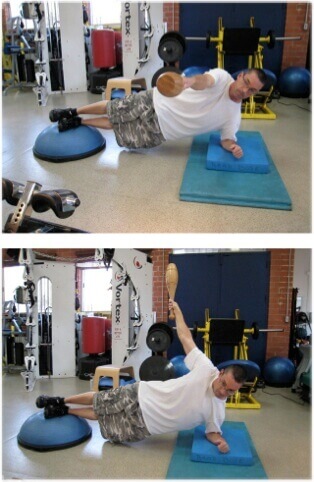Performance & Race Driving Tip
Speed Secret: Given equal cars and equal skills, the fittest driver is going to win.
You don’t need to be a pro to drive at a level where fitness plays a critical role in your performance. If you’ve ever felt worn out while heading home from the track, you know what I mean.
You know that your physical fitness level impacts your mental performance – if you’re beginning to feel physically tired, some amount of brain power is being used up to think about that ache, pain or just-tired muscle. And it usually impacts your mind before you even realize it.
 One of the easiest and most effective ways to improve your driving is improving your overall physical fitness level. I’m not going to get into specifics of how to do that, as there are better people than I to advise you on what to do. Check out what Simon Hayes of Performance Physixx (http://www.performancephysixx.com) has to say.
One of the easiest and most effective ways to improve your driving is improving your overall physical fitness level. I’m not going to get into specifics of how to do that, as there are better people than I to advise you on what to do. Check out what Simon Hayes of Performance Physixx (http://www.performancephysixx.com) has to say.
However, you already have a good idea of where to start with some basic physical training – the areas of your body that feel tired and/or sore at the end of the day (or the next day). For most drivers, that’s in the neck, shoulders, arms and hands. Often, tired and sore hands and arms are an indication that you’re not relaxed enough, but it could be that you need some additional strengthening. My experience has been that what you want the most is endurance in your muscles, more than outright strength. So, more reps of a lighter weight is best when training.
An area that most drivers do not give enough attention to is core strength – abdominal and lower back stuff. This is more important than just about anything else.
Cardio training is a must. Even if you’re not racing, or driving on track for long sessions, a big part of your endurance comes from a solid basic fitness level as a result of running, cycling or some other form of cardio training. At one time in my racing career I set myself a goal of training for twice the length of my races. If was competing in a 45-minute race, I had to run for at least 1.5 hours. That worked until I started racing 24-hour races where I drove for up to three hours at time! But still, if your sessions on track are thirty minutes long, I think you should be able to run for at least thirty minutes.
Even if you’re not racing, and you’re only doing HPDE and track day events (I don’t say “only” as a way to say that these events are any less important or challenging), your fitness level plays a big role in the level of enjoyment. If you want to have even more fun on the track, commit to a fitness training program.
Check back here often for more tips and advice for performance drivers, race drivers, high performance driving instructors, and anyone else interested in learning to get around race tracks quickly.
Please do me favor and share this now with others who you think would either learn something from it, or enjoy it, by clicking on any of the links below. Thank you!
